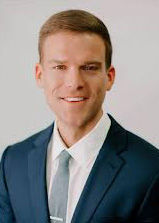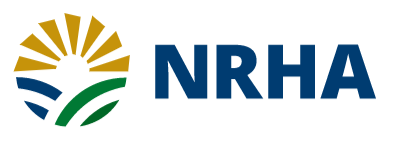Rural hospitals unlock hidden revenue with charge capture
Rural hospitals across America are facing a financial crisis. Over half are operating in the red, and hundreds are at risk of closure. Contributing factors include limited technology, workforce shortages, and complex payer requirements. Yet hidden within their current workflows are millions in missed revenue — just waiting to be captured.
The good news? These leaks can be stopped.
By focusing on strategic revenue cycle management (RCM) — especially charge capture optimization, the single biggest source of potential lift — rural hospitals can stabilize operations, reclaim lost revenue, and ensure long-term sustainability.
In many cases, the revenue loss isn’t from catastrophic errors — it’s from thousands of small oversights that add up over time. That missed injection in the ED, the overlooked therapy session, or the undercoded outpatient procedure may seem minor in isolation, but across hundreds or thousands of encounters, it becomes a financial gap too big to ignore.
Core challenges draining revenue
Rural hospitals face unique pressures that make optimizing the revenue cycle challenging:
- Staff bandwidth constraints: Operational demands leave little time for proactive RCM efforts.
- Limited IT resources: Many hospitals lack the systems or support to identify revenue leakage.
- Payer complexities: Denials, prior authorization hurdles, and slow reimbursements disrupt cash flow.
- Charge capture gaps: This is the most costly oversight — missed billing due to workflow or EHR limitations.
The combination of these factors creates an environment where revenue slips through the cracks unnoticed. Staff are overburdened, systems are outdated or underutilized, and financial teams are left reacting instead of planning. While all these barriers matter, charge capture is the most immediate and impactful place to start.
Charge capture: The No. 1 hidden revenue opportunity
When hospitals fail to bill for every reimbursable service they provide, they leave money on the table — often unknowingly.
Studies show 90 to 95 percent of potential revenue lift in rural hospitals comes from outpatient claims, making charge capture the largest and most addressable opportunity for financial improvement.
Commonly missed charges include:
- Emergency department services
- Outpatient surgery
- Imaging
- Bundled supplies and injectables
- Physical and occupational therapy
These aren’t rare cases — they’re services performed daily in most rural facilities. Yet due to system limitations, poor documentation, or inefficient workflows, they frequently go unbilled or underbilled.
The result is not only lost revenue, but also missed opportunities for reinvestment into staffing, technology upgrades, and patient care initiatives.
The solution is to go beyond just catching errors before claims go out the door and focus on eliminating the root cause of charge capture misses.
That means:
- Identifying where in the workflow charges are being dropped or miscoded
- Re-training staff on documentation standards
- Reconfiguring EHR and billing system logic to align with actual clinical practice
- Using technology-backed charge capture audits as a safety net but not the only line of defense
By addressing root causes rather than just cleaning up downstream issues, hospitals create sustainable improvements in revenue integrity. The result? Fewer errors, faster payments, and less reliance on reactive tools to plug revenue leaks.
It’s also a morale boost for clinicians and administrative staff who are frustrated by the feeling of working hard but seeing little improvement in the hospital’s financial health. Empowering teams with better tools and training fosters a culture of accountability and progress.
Additional areas for revenue recovery
After charge capture, other RCM improvements still offer meaningful gains:
Billing and AR follow-up
- Problem: 30 to 40 percent of rural hospitals struggle with AR follow-up.
- Solution: Augment internal teams with external RCM partners to accelerate collections and reduce aging.
- Why it matters: Extended AR cycles can choke cash flow. Accelerated collections mean more predictable financial planning, fewer write-offs, and better operating margins.
Denial management and prior authorizations
- Problem: Less than 25 percent of rural hospitals have a proactive denial prevention strategy.
- Solution: Use denial analytics and automation tools to flag trends and resolve issues before claims are denied.
- Why it matters: Denials don’t just delay payments — they often result in permanent revenue loss. Every avoidable denial prevented is revenue retained without additional effort.
Strategic pricing and payer contracting
- Problem: 80 to 90 percent of hospitals lack structured pricing strategies.
- Solution: Benchmark fee schedules and renegotiate payer contracts to ensure competitive reimbursement.
- Why it matters: Pricing transparency and fair contracts can make or break a hospital’s bottom line, especially when reimbursements fall below the cost to deliver care.
Technology is the multiplier
Modern RCM solutions aren’t about replacing staff — they’re about making them more effective. Key tools include:
- AI-driven charge capture: Automates identification of missing codes
- Predictive denial analytics: Flags denial trends before claims are submitted
- Automated prior auth tools: Streamlines approvals, reduces delays
- Seamless EHR integration: Ensures accuracy and efficiency across systems
These tools act as a force multiplier, expanding the reach and capacity of small teams. For rural hospitals struggling with staffing shortages, the ROI on these solutions can be profound. Automation picks up the slack where human resources are stretched thin.
When deployed strategically, these technologies also reduce burnout. Fewer manual tasks, fewer errors, and faster payments mean less stress and greater job satisfaction for billing and clinical staff alike.
Case study: $2.3M recovered in one year
A rural hospital with mounting denials and charge capture issues partnered with an RCM vendor to implement:
- Charge capture audits for outpatient services
- Denial management automation
- Targeted AR strategies
The results:
- $2.3 million in recovered revenue
- 40 percent improvement in claim accuracy
- 20 percent faster reimbursement turnaround
Beyond the financial gains, the hospital reported improved staff morale, better communication between departments, and increased confidence in their data. This transformation showed what’s possible when RCM is treated as a strategic priority, not just an administrative function.
Overcoming IT gaps with the right partners
Many rural hospitals lack the internal bandwidth to implement advanced RCM tools, but they don’t have to do it alone. RCM experts can manage the technical lift by seamlessly integrating with your existing systems and allowing your team to stay focused on patient care.
Look for partners with experience in rural settings — ones who understand the nuances of low-volume, high-variation billing environments. The right partner doesn’t just provide tools – they bring insight, training, and long-term support tailored to your hospital’s size and needs.
The path forward
The fastest way to make a financial impact is to start with charge capture. From there, hospitals can build momentum with AR follow-up, denial management, and strategic pricing.
Every dollar recovered is a step toward preserving services, retaining staff, and keeping care accessible in rural communities. RCM doesn’t have to be overwhelming when approached with the right mindset and support. It can be a lever for real, lasting change.
Rural health care doesn’t have to be a story of scarcity. With the right RCM strategies and partners it can be a story of smart recovery and long-term sustainability.
NRHA adapted the above piece from Ni2 Health, a trusted NRHA partner, for publication within the Association’s Rural Health Voices blog.
 | About the author: Taylor Searfoss serves as vice president of business development at Ni2 Health, hospital division of Infinx, where he leverages extensive experience in health care administration, sales strategy, and revenue cycle management. He began his career in hospital-based revenue cycle operations before transitioning to the business partner sector, where he has continued to drive value for health care organizations through innovative solutions and strategic collaboration. Searfoss is a Fellow of the Healthcare Financial Management Association and holds a Master of Public Health Administration from Meharry Medical College. |
